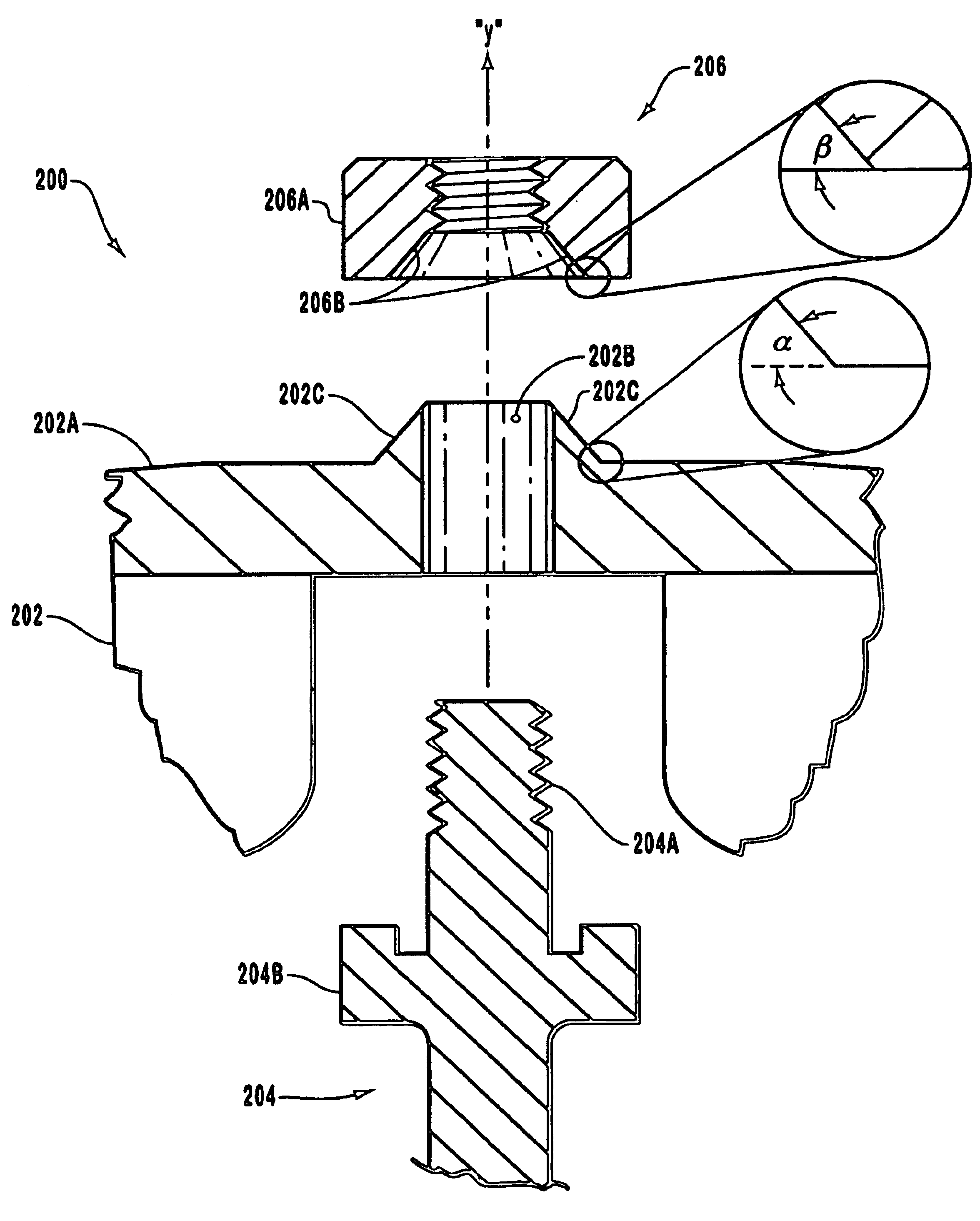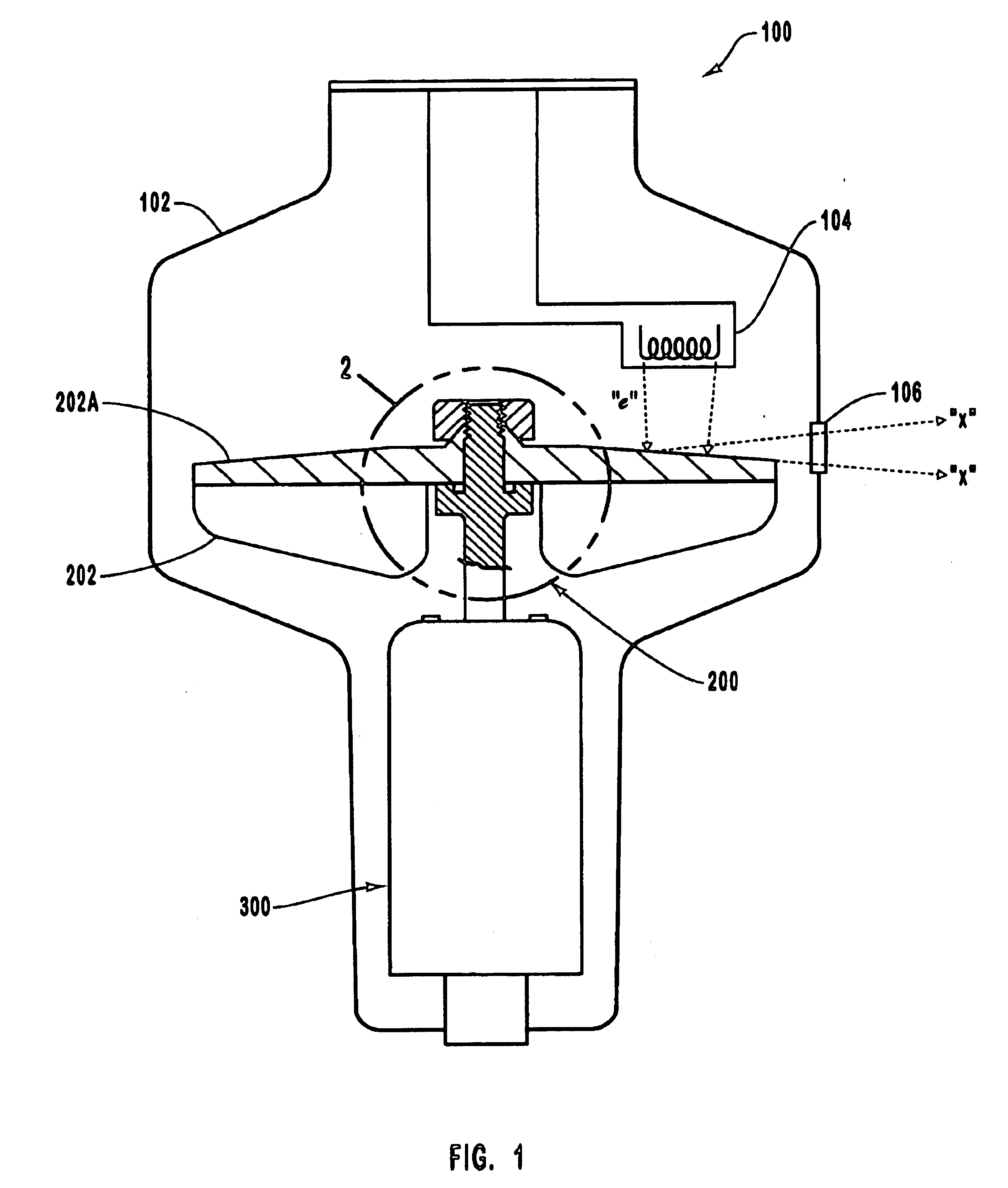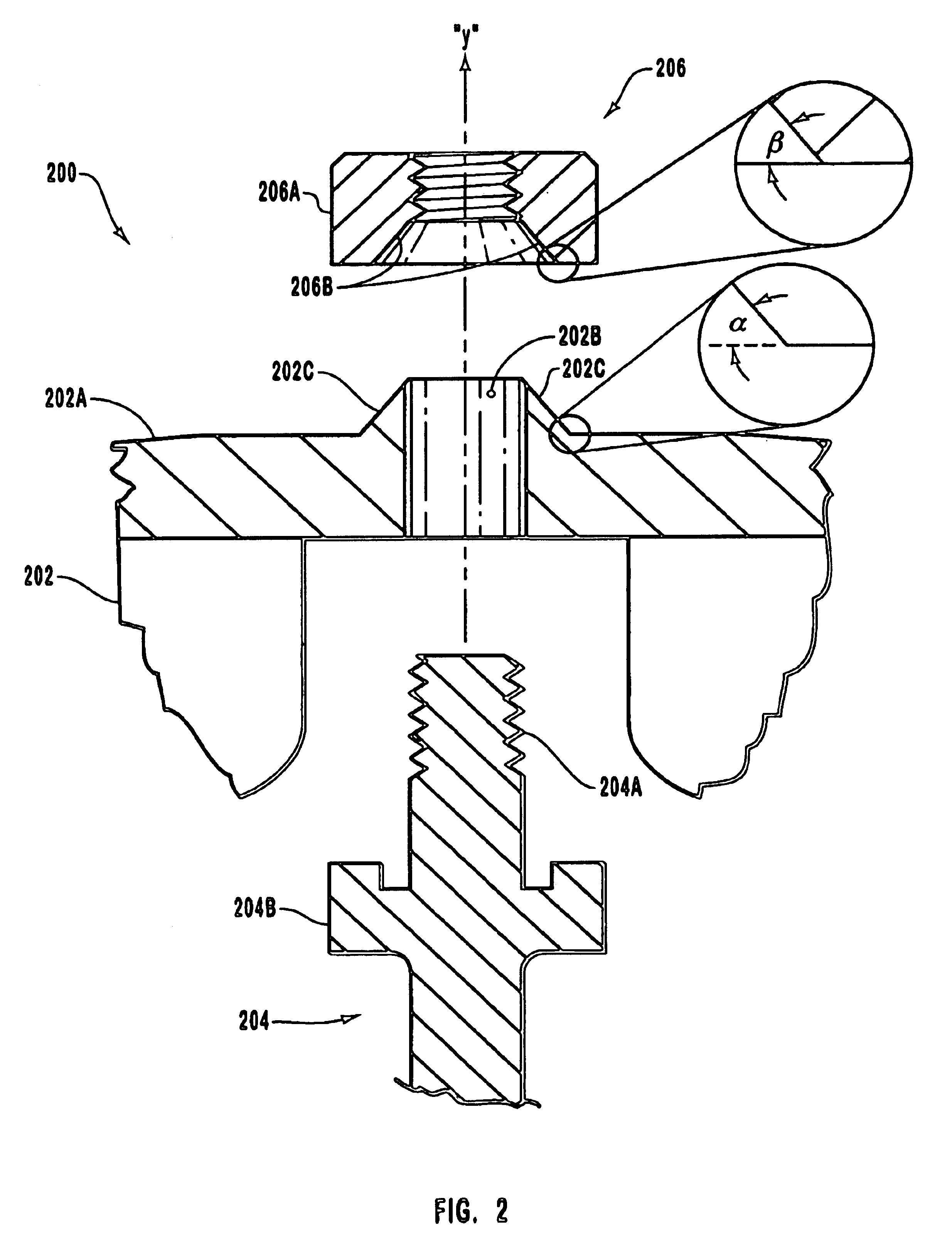Integrated component mounting system for use in an X-ray tube
a technology for mounting systems and components, applied in the direction of x-ray tube electrodes, electrical devices, electric discharge tubes, etc., can solve the problems of high operating temperature of the target anode, significant amount of heat produced in the target anode, and difficult positioning of the component, so as to facilitate the centering of the component. , the effect of facilitating the positioning of the componen
- Summary
- Abstract
- Description
- Claims
- Application Information
AI Technical Summary
Benefits of technology
Problems solved by technology
Method used
Image
Examples
Embodiment Construction
Reference will now be made to figures wherein like structures will be provided with like reference designations. It is to be understood that the drawings are diagrammatic and schematic representations of various embodiments of the invention, and are not to be construed as limiting the present invention, nor are the drawings necessarily drawn to scale.
Reference is first made to FIG. 1, wherein an x-ray tube is indicated generally at 100. Note that x-ray tube 100 is simply an exemplary operating environment for embodiments of the present invention and that such embodiments may profitably be employed in any other environment where it is desired to implement the functionality disclosed herein. By way of example, some embodiments of the invention may be used in conjunction with components such as pump impellers.
As indicated in the illustrated embodiment, x-ray tube 100 includes a vacuum enclosure 102, inside which is disposed an electron source 104, such as a cathode. An integrated compo...
PUM
| Property | Measurement | Unit |
|---|---|---|
| operating temperatures | aaaaa | aaaaa |
| temperature | aaaaa | aaaaa |
| radial force | aaaaa | aaaaa |
Abstract
Description
Claims
Application Information
 Login to View More
Login to View More - R&D
- Intellectual Property
- Life Sciences
- Materials
- Tech Scout
- Unparalleled Data Quality
- Higher Quality Content
- 60% Fewer Hallucinations
Browse by: Latest US Patents, China's latest patents, Technical Efficacy Thesaurus, Application Domain, Technology Topic, Popular Technical Reports.
© 2025 PatSnap. All rights reserved.Legal|Privacy policy|Modern Slavery Act Transparency Statement|Sitemap|About US| Contact US: help@patsnap.com



